There’s really no rocket science to growing buckwheat sprouts – you just soak and sprout, as easy as that! Believe me, sprouted buckwheat will become one of your pantry essentials.
What is sprouted buckwheat anyway? It’s when you take raw buckwheat groats, soak them and let the sprouts grow. Basically you’re sprouting buckwheat seeds that would grow into new plant on the field.
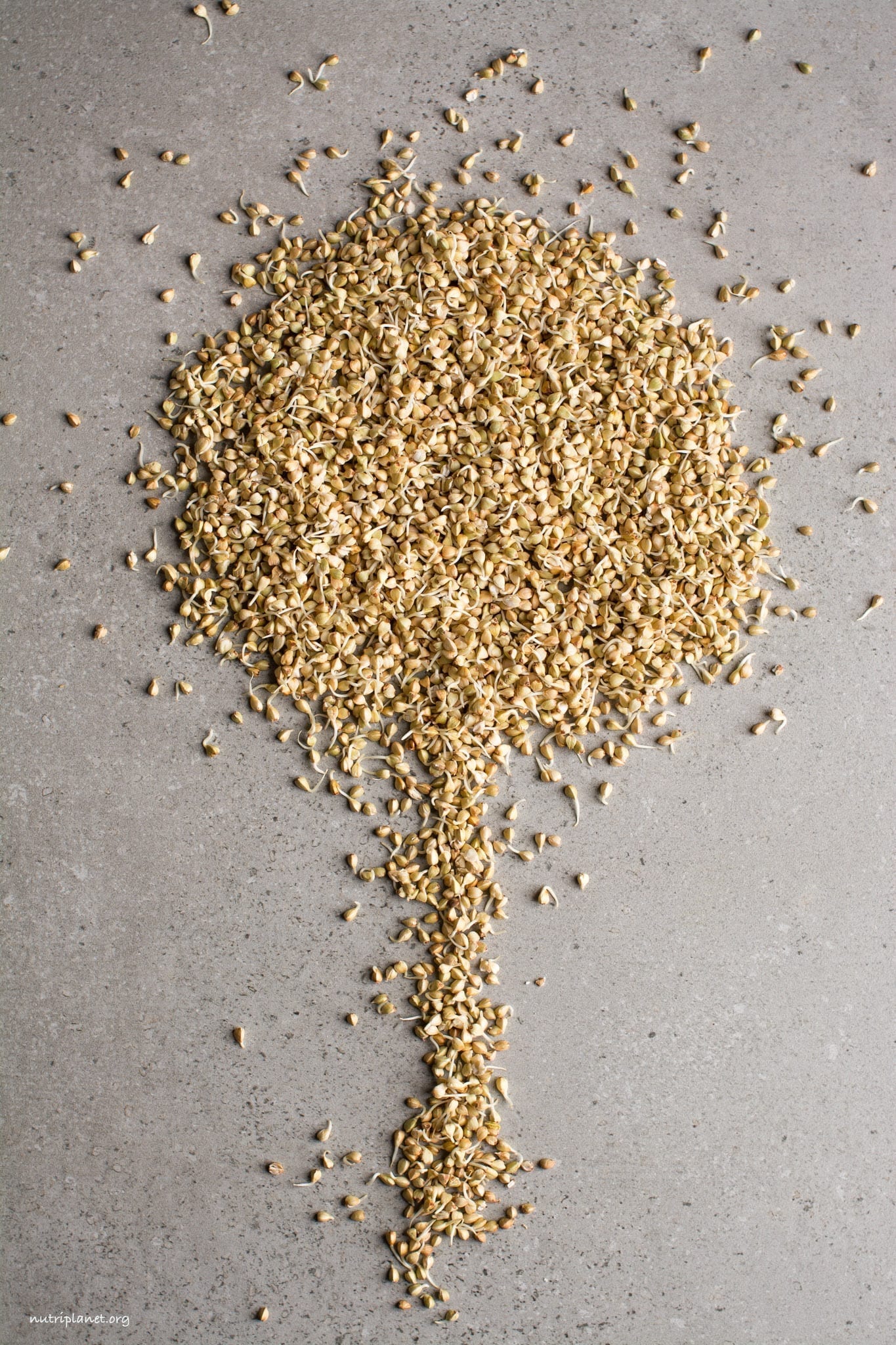
Benefits of sprouted buckwheat
Like all other grains, nuts and seeds, also buckwheat contains enzyme inhibitors that interrupt with vitamin and mineral absorption and cause digestive ailments. Therefore, at least soaking is required to make them more digestible.
Sprouting however, takes you to a completely new level as sprouts use the starches to grow, hence decreasing the glycemic load of buckwheat or any other grain. Therefore making them beneficial for anyone struggling with Candida overgrowth or blood sugar fluctuations.
More benefits:
- Buckwheat is one of the most complete sources of protein on the planet, containing all eight essential amino acids.
- The sprouts cleanse colon.
- Sprouting turns buckwheat from acidic to alkalizing.
- It is also rich in lecithin, making it a wonderful cholesterol balancer.
- The sprouts are high in bioflavonoids and co-enzyme Q10.
- It also contains the B vitamins, magnesium, manganese, and selenium.
- Great addition to vegan Candida diet.
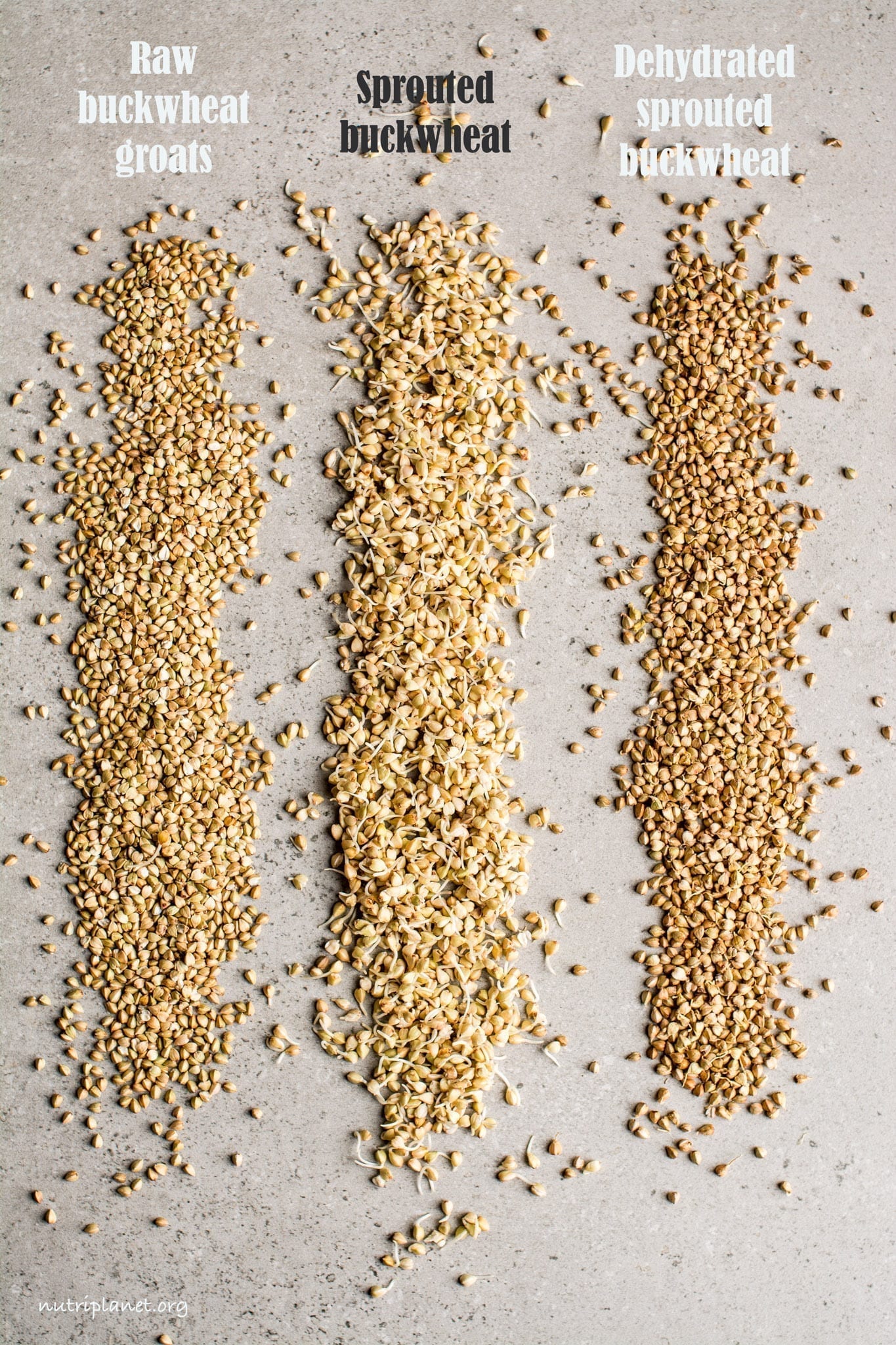
How to eat sprouted buckwheat
You’ll see that the sprouts are such versatile ingredients and have many uses! I’m sure you’ll even come up with your own recipes.
In short, you can use them in any recipe that uses soaked buckwheat. Just don’t let the sprouts grow too long – a few millimetres is good to substitute soaked groats.
Here are my favourite ways to use and eat them:
- Dehydrated sprouts – dehydrate the sprouted groats in oven, dehydrator or in the sun and store in airtight container. It’ll be a great base for granola or you can just sprinkle them on porridge, desserts and on salads. I also have a delicious chocolate candy recipe that uses dehydrated sprouted buckwheat.
- Pancakes – just sprout the soaked buckwheat before blending the batter. Some recipes you can follow: Tofu & Beet Pancakes, Matcha-Ginger Pancakes, Buckwheat Sourdough Pancakes, Vegan Buttermilk Pancakes.
- Sprouted buckwheat flour recipes – any recipes that use buckwheat flour. To make flour simply grind sprouted dehydrated buckwheat groats into flour. Recipes to use: No Yeast Cinnamon Rolls, Yeast-Free Buns, Gluten-Free Gingerbread Cookies, Sweet Potato Brownies.
- Sprouted buckwheat bread recipe – make my fermented buckwheat bread with sprouted buckwheat. This is what I’ve been doing lately myself.
- Sprouted buckwheat crackers – simply use the sprouts instead of soaked buckwheat.
- Pizza crust is another idea that will soon be up on blog.
- Porridge – blend with berries and/or banana for raw buckwheat porridge or make a cooked version. For a creamy result, blend the sprouts with water or plant-based milk before cooking. For details, read the post 5 Ways to Prepare Nutritious Porridge.
- Sprouted buckwheat flour pancakes – you can use the flour in any recipe calling for buckwheat flour.
- Make yourself a big salad with the sprouts as main protein source.
As you can see, there are many recipes to choose from. You definitely should not get bored, tired or be out of ideas when it comes to using up a batch of sprouts.
Let me know in comments whether you have tried sprouting buckwheat or any other grains/legumes before! I’d love to hear from you!
How to Sprout Buckwheat
Time needed: 18 hours
There’s really no rocket science to growing buckwheat sprouts – you just soak and sprout, as easy as that! Believe me, sprouted buckwheat will become one of your pantry essentials.
- Take any amount of raw organic buckwheat groats.
Make sure the groats indeed are raw and not roasted or toasted. They should be of light green colour.
- Next, place the buckwheat groats into a bowl or jar and fill it with water.
Add acidic medium (apple cider vinegar or lemon juice) to help neutralize enzyme inhibitors. Rule of thumb is 2 tablespoons acidic medium per every cup of dry buckwheat.
- Soak buckwheat groats for at least 6 hours for nutritional benefits.
Then drain and rinse them well.
- Next, place them (in a sieve) on a bowl bigger than the sieve.
Cover with clean and slightly damp folded kitchen cloth. Keep them at room temperature. Rinse them about 2-3 times a day as they can get slimy.
- Wait for the sprouts to emerge.
The sprouts will be with ideal length in 24 hours, but already usable in 12 hours.
- Dehydrate (optional)
Let them dry on a plate or put them in warm oven or dehydrator for quicker dehydration.
Nutritional info per 100g (3.5oz): 343 kcal, 71.5g carbohydrates, 3.4g fats, 13.3g protein, 10g fibre, and 1mg sodium.
Tips on growing buckwheat sprouts:
- If time is of essence, use quick sprouting, i.e. soak buckwheat groats for just 20-30 minutes before putting them to sprout.
- Don’t leave too big quantity in a sieve, if you’re not able to rinse it often as it can develop mould.
Disclaimer: this post contains affiliate links.
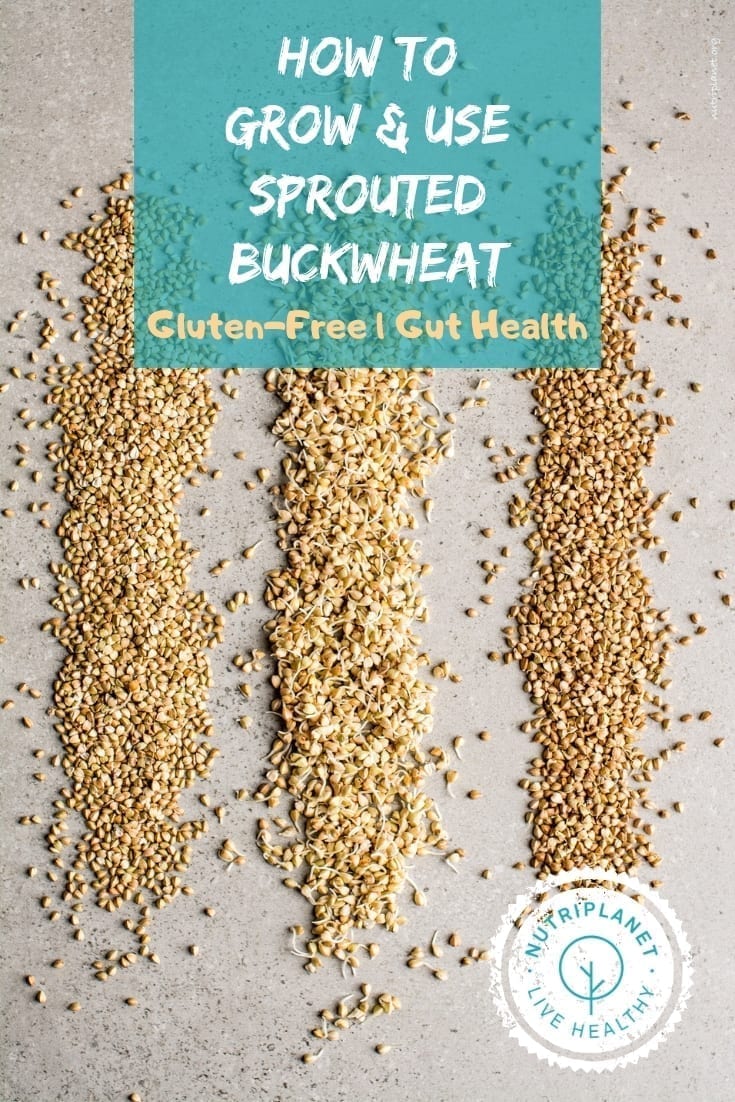
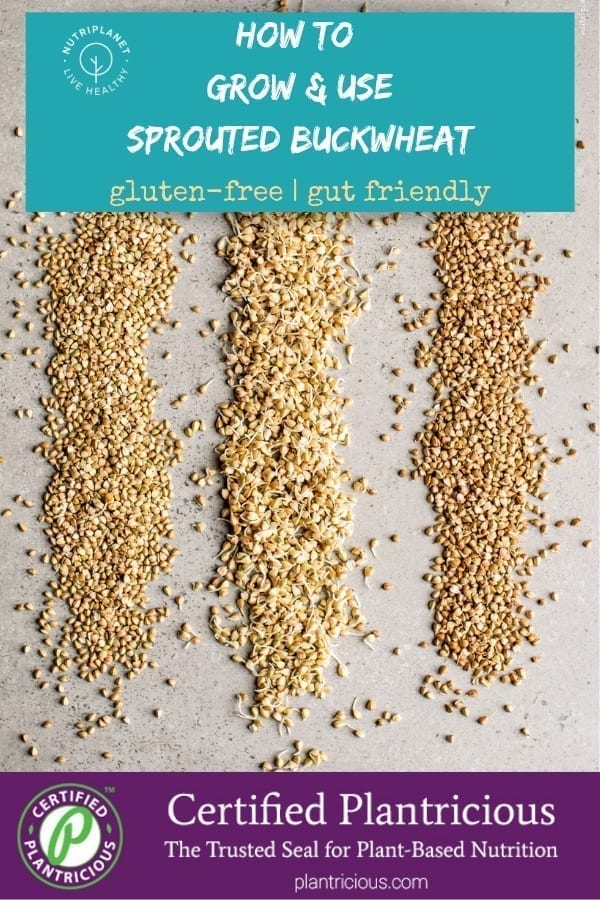
This post is also available in: Spanish

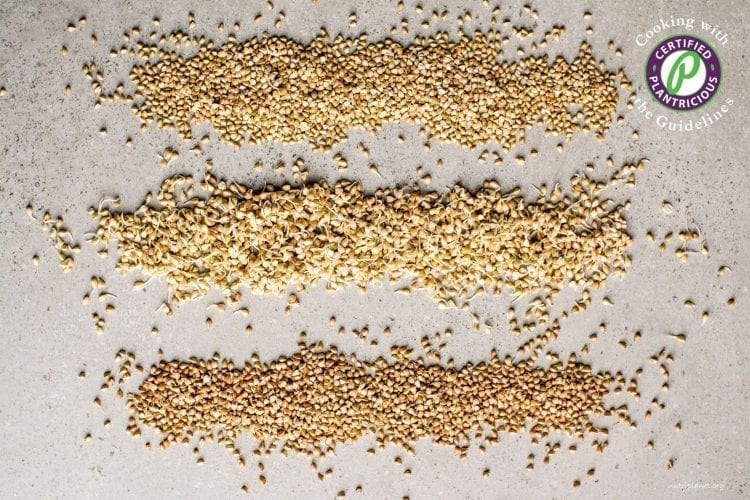



































Very helpful — thanks! Question: When you say ideal length of time for sprouting is 24 hours, do you mean from start to finish (including the first 6 hours) or in ADDITION to the first 6 hours (so 30 hrs from start to finish)?
Hi Heidi! I meant 24 hours in addition to soaking 🤗
Hi Nele,
I’m just wondering if it is okay to sprout the buckwheat in a metal sieve or should it be plastic?
Many thanks!
Hi! Metal is totally fine!
I am having trouble finding a hulled organic raw buckwheat source! I have been sprouting/dehydrating them for about five years now… first Whole Foods and now Anthony’s are out of stock. Have you any recommendations? Thank you-
Hi! Try ordering online. For example, I found https://www.sunorganicfarm.com/product/organic-buckwheat-groats.html?gclid=CjwKCAjw6raYBhB7EiwABge5KnG0IlR_8WQeFuPoD9uOXImUo_THTJ8Bxj_1Q4nOLDFGOk8WOt3GnxoCLw4QAvD_BwE and Bob’s Red Mill https://www.bobsredmill.com/organic-raw-buckwheat-groats.html